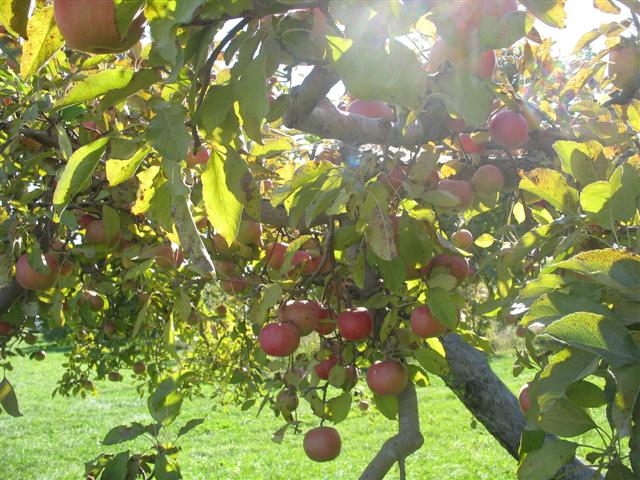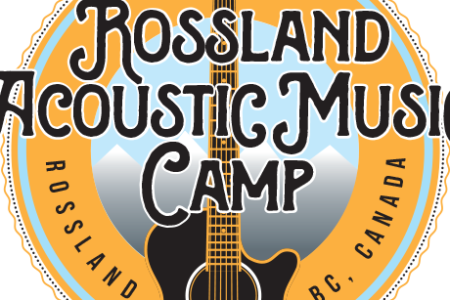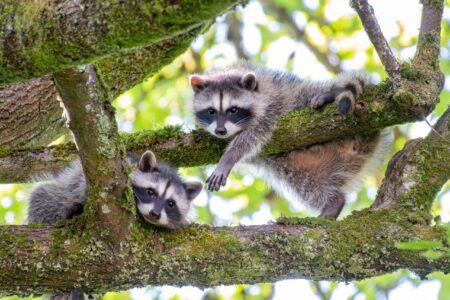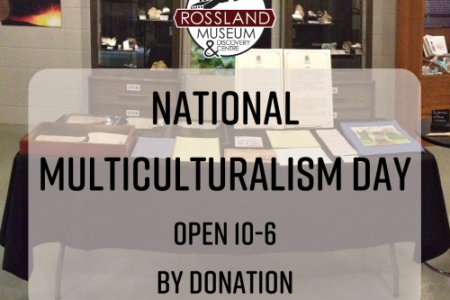TALES AND LEGENDS OF THE MOUNTAIN KINGDOM: Modern sustainability movement’s roots run deep
Way back in the mists of time, in the mid 1970s, my parents purchased a wartimer on Thompson Avenue, eight or so houses west of where Esling intersects that street, and just south of the far southern end of St. Paul Street and where it meets Esling and Cook. That part of St. Paul Street between Esling/Cook and Kootenay Avenue used to be the bane of my existence: it’s a pretty steep hill and I walked it every day to get to high school after hiking up a trail that went north through our back yard, bisecting an undeveloped piece of land between Esling Drive and Thompson Avenue.
This story is not about my hikes to school, though, it’s a story about trees.
That undeveloped slice of land, kind of triangular in shape, was my childhood playground, and it was populated by a bunch of very elderly, long-unattended, lichen-covered apple trees. It was a former orchard left over from a time when the writing was on the wall the near end of the gold boom. Mine production was down, way down, and the city needed to look elsewhere to keep the community sustainable.
Agriculturally, we had dairies, small farms, a cattle ranch up by the ski hill, and of course we had the Chinese Gardens out on the far southern periphery of the city limits. But what city council thought Rossland we needed more of, and what they saw as a potential economic resource, was fruit.
Yes, fruit.
It’s not like we were totally fruitless, however; we do live in an area abundant in huckleberries, after all, and some of the Chinese gardeners took it upon themselves to grow strawberries. One rather entrepreneurial Chinese man cultivated quite beautiful berries on the banks of Trail Creek, but that turned out to be problematic: the creek was heavily polluted and eventually the local newspaper, the Rossland Miner, published an article about the strawberry production, warning residents not to purchase the berries from the berry man because they were contaminated. The paper menacingly stated that
The Chinese are thoroughly unscrupulous in packing their fruit, and entirely oblivious to the sanitary aspects of strawberry culture. Any interested observer can satisfy himself in an hour that the principal strawberry grower among the Chinese gardeners near the city has quietly tapped the sewer below Thompson avenue and run the filthy fluid from there to his strawberry patch, where the sewage is run over the ground and used to wash the berries for the purpose of brightening the fruit and rendering it attractive in appearance. In forcing early vegetables the Chinese men resort to still more filthy practices, but their strawberries are equally unfit for consumption, and the Chinese vendors should be avoided in the interests of health.
However, it could be said that it was the Chinese gardeners who inspired the city of Rossland’s fruit tree scheme of 1907, for the Chinese had planted their own orchards with splendid results everyone was all over like a wet blanket before the strawberry controversy. And, by 1904, in the valleys around Rossland, there were privately owned fruit orchards, one as large as 700 trees.
Seeing how successful they were, Rossland city council embarked upon a plan to bring more fruit to Rossland as a means of keeping the community sustainable as the mining boom started to become a distant but pleasant memory. Both the Chinese orchards and the other orchards proved that we had an appropriate climate and nutrient rich enough soil, so why not take this all one step further and get in on the commercial fruit game in a big way?
In 1907, Rossland had an Arbour Day. It purchased 500 apple and soft fruit (pears and plums and cherries, I assume, given what I know grows around here) trees to sell to residents, and 350 of them actually sold. They were all planted on this Arbour Day with much celebration and support from the Miner.
Rossland’s apples made an appearance at an agricultural show in London, England that year, touted as special because they were grown at such a high altitude (3500 feet). The Brits found this astonishing, apparently. Three years later, Rossland’s apples made a splash at the Canadian National Apple Show in Kaslo, again because they were grown at such a high altitude.
In 1910, the provincial government made the announcement that Rossland would get its very own “demonstration orchard” in order to “promote the growing of fruit trees and to teach
potential farmers techniques suitable to the mountain environment and for which the City promised free water.” Free water would have been a huge deal back then, since this was quite a limited resource, and high consumption outfits like Chinese laundries were forced into a meter system to regulate their usage (or just to gouge the Chinese).
A competition was held and the result was a new orchard in the northeastern part of town established in 1911. There was another orchard on a ranch north of the city, owned and run by one Charles Peters, and he employed four Chinese gardeners to maintain his fruit.
But alas, Rossland did not become a orchard-rich, Creston-esque, commercial fruit-growing mecca. We instead became a bedroom community of smelter-dominated Trail, but that is perhaps a story for another time.
Meanwhile, that abandoned orchard on the slopes above eastern Thompson Avenue where I played as a child created a lot of rich memories for my family and me. Those apple trees (in desperate need of pruning) supplied my mom with endless apples in the fall to bake with. The trees themselves were where my brothers and I liked to climb and sit and look at the world from a higher perspective.
We built forts and tree houses in them with scraps of wood from my dad’s woodpile, and we played with neighbour children there. In the fall, we had to be careful, because the falling apples were like easy candy for bears, and our back yard was indeed a learning ground for living amongst wildlife (my city slicker cousins were terrified by our stories). We learned to identify bear scat and learned about bears’ diets in that orchard. Our beloved first family pet, a tuxedo cat named Percy, used that orchard as his hunting ground, bringing us presents of dead robins, rodents, and lizards from time to time.
But the lessons of the city’s fruit tree scheme is a germaine one to contemporary Rossland, with our Sustainability Committee, our community garden, our moves towards growing and purchasing locally-produced foods, and our backyard chicken coop trend. Back in 1907, the city’s government was already looking for contingencies for when the main resource of the town dried up. And dry up it did. The city council that put on Arbour Day was forward-thinking and trying out ideas to plan for the future of the town. No, it didn’t take off, but they were demonstrating some pro-activeness.
Now there is as house built directly behind our old one, and I heard that there could be other houses built on the remaining orchard land in the future (though as yet, the land is still vacant). I can’t help but feel a little bit sad about that.
Thanks very much to Ron Shearer and his work “The Chinese and Chinatown of Rossland: Fragments From Their Early History”, where the information about the fruit tree scheme, the strawberry controversy, and the other historical information contained in this article came from. You can read the essay online here.


























